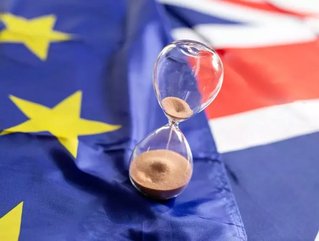How businesses can prepare their supply chains for Brexit

When the Brexit transition period ends (31 December 2020) and the UK leaves the EU’s Single Market and Customs Union, the UK will begin a new economic relationship with the EU – either with a trade deal or with ‘no deal’.
Both outcomes will lead to delays, as companies struggle to meet the new border procedures that apply to all third countries trading with the EU. The UK government’s ‘Reasonable Worst Case Scenario’ for the end of the transition period references maximum queues of c. 7,000 trucks with associated delays of up to two days. The disruption is expected to be at its peak in the first two weeks of January, and could last up to three months.
These delays could impact all goods coming into the UK – not just from the EU – but most particularly goods entering the EU from the UK. This is because the EU is implementing full border formalities from 1 January 2021, whereas the UK is phasing in some of its formalities over six months.
Soon, companies which were previously straightforward distributors or suppliers will become the importer and exporter of record for customs purposes, and the EU importer for product safety purposes. This comes with many additional regulatory and legal obligations. As a result, organisations that are unprepared for the changes may experience additional cost and delays along their whole supply chain.
Whatever the outcome on the deal, there are key commercial actions businesses can still take with fewer than 100 days to go until the transition period ends.
Prepare to be prepared
Here we outline top tips for supply chain leaders on how organisations can adapt, thrive and remain efficient during this time of unprecedented change.
- Map out the physical flow of goods from country of origin through to the final destination, from raw materials to finished goods. This will help you understand which flows are most likely to come under Brexit pressure – the deep sea ports of Southampton and Felixstowe, for example, are less likely to experience delays than RORO ports in the Short Straits.
- Assess which inbound/outbound transport routes may give rise to logistical pressure points for your key goods flows. These routes will most likely present the highest delivery risk, so consider accelerating orders from January into December, stockpiling critical items. Ultimately plan to avoid the high-risk period as much as possible.
- Identify who in the supply chain has responsibilities in relation to goods movements and assess whether they are prepared – for example, INCOTERMS, which decide who would be the importer/exporter. This will tell you what your new responsibilities will look like. But remember that your business might still encounter commercial pressures due to increased costs even if you are not the direct importer or exporter.
- Identify inbound/outbound shipments due around Brexit cut-off dates, and talk to your customers upfront if you anticipate issues. Prioritise key customers and service priorities, recognising that you may not be able to service all of your customer base as you might wish.
- Establish a ‘control tower’ to oversee supply chain operations in the run up to 31 December 2020, providing an early warning system and centre point for crisis management to deal with possible disruptions.
The final countdown
To fully take advantage of the new trading environment that will result after the transition period, supply chain leaders should make sure to cover all bases with necessary scenario planning and impact assessments of likely implications for production, cost, cash and revenues from delays and/or changes in the supply chain.
There is still enough to time for companies to get their ducks in a row and if they do so effectively, they will be well placed to thrive in the ever-changing environment.
Authored by Sally Jones, EY UK Partner and Trade Strategy and Brexit Lead, and Gustav Mauer EY UK Associate Partner and Consumer Products Supply Chain Lead






